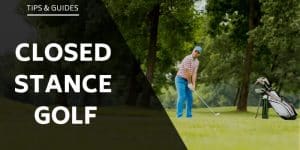Like in other sports, there are various “tricks of the trade” to improve overall performance in golf, and developing the ability to hit different types of golf shots is key. Before we go into detail and offer advice on how to hit the various shape shots, let us start at the beginning.
Any Round of Golf Will Require Basic Shots to be Played to Complete Every Hole.
- Tee shot or Drive
- Approach shot
- Putt
- Pitch shot
- Chip shot
- Bunker shot
The Drive
The opening shot on each par 4 or par 5 is mostly played with the driver. Not only is it the longest club in the bag, but it is the most difficult to control. The loft on the driver can vary from 6 degrees up to 12 degrees. The more loft makes it easier to hit straight and often players unable to control the driver will hit a 13 degree 3-wood off the tee. Hitting it long, straight, and finding the fairway, is the initial goal and sets up the hole for a good score.
Approach Shot
The approach shot to the green is all about precision, accuracy, and distance control. Depending on the length of the hole this shot can be played with a 3-wood, hybrid or long iron ( par 5 ) or a middle iron, or one of the wedges. ( par 4 ) The middle irons are the scoring irons and professionals spend hours on the practice range honing their skills with these clubs.
Putt
Watching any professional tournament it is clear that the player with the “hottest” putter on any given day, is the player that will win. There are many different putters and putting styles that are effective, and this facet of the game is paramount to better scores and handicap improvement. It is the MOST practiced part of golf by the best players in the world.
Regulation Play
The drive, approach, and putting are what are termed regulation play on a par 4. In other words, the golfer hits his drive, follows up with the approach shot, and hits the green. A 2-putt on the green completes the par 4 in regulation.
The Pitch, Chip, and Bunker Shot
Unfortunately, playing regulation golf all through the round is a very tough ask. Weather conditions like rain, wind, and course conditions all have an effect on the golf ball. This is where the 3 other shots are brought into play during the round.
Pitch Shot
Should the golfer hit the tee shot into the rough, it may not be possible to reach the green with the 2nd shot. The better players will then play a tactical shot that will leave them at a distance from the green where they are most confident to hit the pitch shot close to the pin. This could be 100 meters out and requires a wedge or 9-iron to hit it pin high. This is a shot that will save par if executed well or present a birdie opportunity on a par 5. It could be closer to the green and is defined by the fact it travels further in the air than it does once hitting the green.
Chip Shot
When attacking the green or a tight pin position, the ball can roll off the green or end up short of the green due to a mis-hit. A chip shot can be played with any club in the bag, depending on the distance to the pin on the green. Ideally, a chip should roll out more on the green, than it travels through the air. The percentage shot or thought process is to land the ball on the green and let it roll out to the pin.
Bunker Shot
Fairway bunkers are strategically placed around the landing areas off the tee or around the green. Playing from a fairway bunker requires the ball to be hit cleanly off the sand. Greenside bunker shots are the one shot in golf that the player deliberately hits behind the ball. Striking the sand about an inch behind the ball and following through is most important to play the shot effectively. The sand actually lifts the ball out of the bunker.
Shots to Improve your Game
The ability to hit different shape shots during play is the key to lowering the handicap and lower scores. Golf courses are designed to challenge the player with every shot, and to meet this challenge requires some advanced skills. Here are the types of shots and a brief description of how to execute them:
Moving the Ball in the Air
Golf jargon has its own meanings or “speak” and it is important to understand it.
Moving the ball in the air refers to the ability to move the ball on a shot from left to right or vice versa. These shots are required when playing doglegs on the course or when a player has to hit a shot around a tree to get to the green.
The Straight Shot
The straight shot is the most difficult shot to hit consistently. It requires the clubface and the swing path to be square at impact with the ball. To accomplish this requires many, many hours of practice, and precision. Not too many professionals use the straight shot as their “go-to shot” because of the difficulty.
The Draw
Moving the ball from right to left in the flight path is a draw or a hook. The swing path is from in to out, creating sidespin. The ball is started out right of the target line and will curve back to it when it hits the fairway. This is a great shot to play in windy conditions, and the draw-bias on the ball causes it to roll out a short distance on the fairway, adding distance. The amount of draw flight is determined by the closed clubface at impact, in relation to the swing path.
How to Hit a Draw?
There are a few basics required to hit the ball with a draw bias.
Close the stance at address Pull the right foot back away from the target line, so that if a shaft were laid across the toes, it would point right of the target line.
Aim the clubface – The clubface should aim at the intended target line or where the player wants the ball to finish.
Swing Path – With a closed stance, the club will be taken back inside the target line, and proceed along that same in-to-out path through impact.
Ball Position – The ball will automatically move back in the closed stance position.
Variations of the Draw – The draw can be hit with a high, medium, or low ball flight which is determined by the ball position and the swing path. The closed face angle at impact determines the amount of sidespin on the ball.
Hook: The hook is an exaggerated draw that will start on the target line and then curve viciously to the left. It is caused mainly by the closed clubface and the swing path not coming from the inside of the target line. There are times when this shot is needed to curve sharply around a tree or object in the target line. It can be disastrous when hit unintentionally.
Tip: Experiment on the practice range to find the ball position, swing path, and the degree to which the clubface should be closed to deliver the intended shot trajectory and shape. Try hitting 3 shots with different amounts of curvature on the ball one after the other on the range. Make notes!
The Fade
Moving the ball flight from left to right is a fade, cut, or slice! The fade has the most gentle curve during its flight, while the cut and slice are more exaggerated. The swing path is from out to in, creating a sidespin on the ball. The ball starts out left of the target line and fades back to it on landing. This is the most common shot amongst right-hand golfers but rarely is it controlled. Normally it is a big cut or slice, which robs players of distance and accuracy. Sadly, when playing golf with a cut or slice, the player tends to make it worse by aiming more and more to the left of the target line, especially in crosswinds.
The fade is very popular with the professional players on the PGA Tour because it offers more control on the shot. The ball will land softly, and not roll out far from where it pitched.
How to Hit a Fade?
As with the draw, there are a few basics that encourage a shot with a fade bias.
Open the stance at Address – Pull the left foot back from the target line. Lay a shaft across the toes of both feet and it should point left of the intended target line.
Aim the Clubface – The clubface should aim at the target line or where the golfer intends the shot to finish.
Swing Path – With an open stance, the swing path will be taken back outside the intended target line, and continue on this out to in path through impact.
Ball Position – With an open stance, the ball will automatically move forward in the stance.
Variations of the Fade – The fade can be hit with a high, medium, or low ball flight depending on ball position, swing path, and the clubface position at impact. The more open the clubface at impact, the more sidespin is created on the ball.
Slice
The “dreaded” slice will start on the target line, or just left of it, and then curve drastically to the right. The main cause is an open face and an incorrect swing path, which travels from in to out, instead of out to in through impact. The open-face increases the sidespin. It is a scorecard wrecker!
Cut
Often the tour players are confronted with trees or bushes and they can be heard talking to the ball asking it to cut! The cut is an intentional shot and is generally an exaggerated fade, but with control. It is a shot all amateurs should learn, and most will find it easier than a draw.
TIP: Most right-hand golfers will find it easier to hit a fade and the practice range is the place to test how different ball positions and clubface angles at impact, will change the ball flight. Starting the backswing along the target line, with a slightly open face at the address, will also give different results.
Other Types of Shots
1. The Punch Shot
This is played mostly when the ball is in the trees with over-hanging branches that block the intended target line. It can be played with any club in the bag, but the main criteria are to keep the ball flight below the tree branches. It is also used extensively in very windy conditions or on links-style golf courses, where a low ball flight is required on approach shots to the green. Move the ball back in the stance and shorten the swing for the best results.
2. Stinger
Tiger Woods perfected this shot and often plays it off the tee with a 2 or 3 iron. It is a low fade that stays beneath the wind. A great shot for links courses. The shot is played with the ball set back in the stance and the clubface “hooded” or slightly closed through impact.
3. The Flop Shot
Phil Mickelson is the master of this shot. It is played from a fluffy lie over a greenside bunker or water, to a tight pin position. The shot is played forward in an open stance, with an open face sand wedge or lob wedge. It flies high, and over the hazard with plenty of backspin, and stops quickly. Warning: Do not attempt this shot from a tight lie, unless it has been practiced for many hours. It will destroy the card!
Final Thoughts
Learning to play a draw or fade is important if the intention is to lower the handicap and improve the all-around game. Doglegs will no longer present problems, and when out of position on a hole, it is a “get out of jail” card. Manufacturing a shot on the course successfully is almost as good as hitting a 300-meter drive!
Related Articles
- How To Grip a Golf Club; A Visual Guide & Different Grip Options
- How to Pitch a Golf Ball; Perfect The Short Approach Shots
- How To Stop Pulling Golf Shots And Avoid That Frustration
- Golf Draw vs Fade
Nick is the founder of GolfSpan and an avid golfer. He's not quite a pro but has over 15 years of experience playing and coaching golfers worldwide. His mission is to bring the golfing community a better experience when it comes to choosing the right golf gear and finding the right setup for your game.






